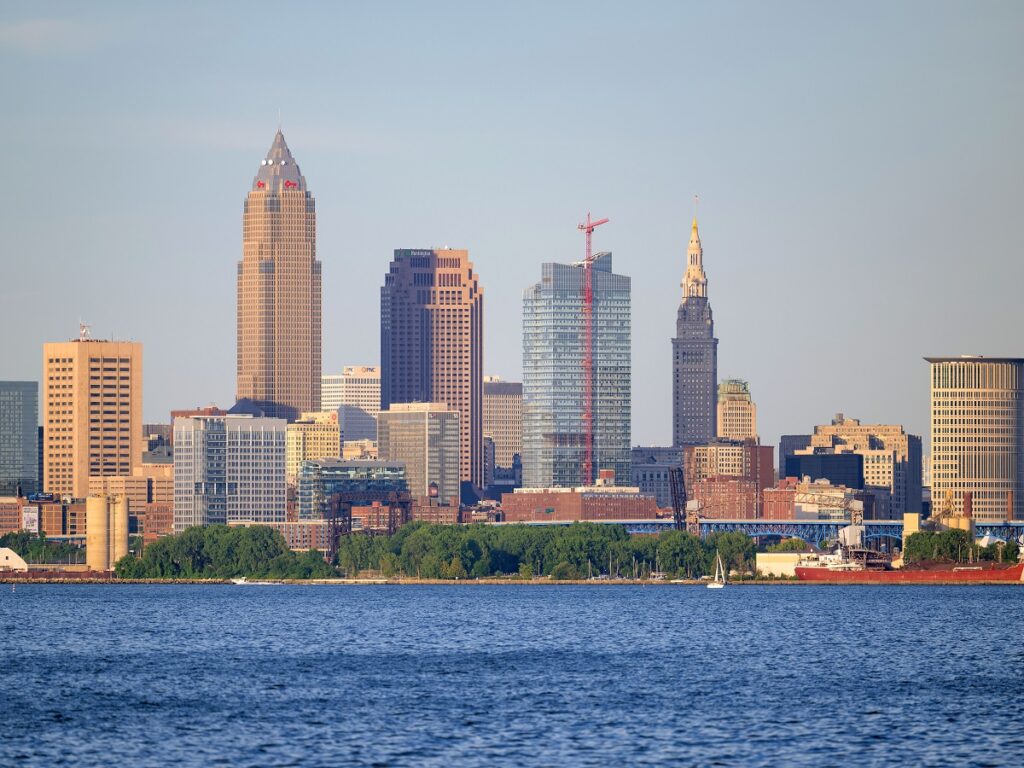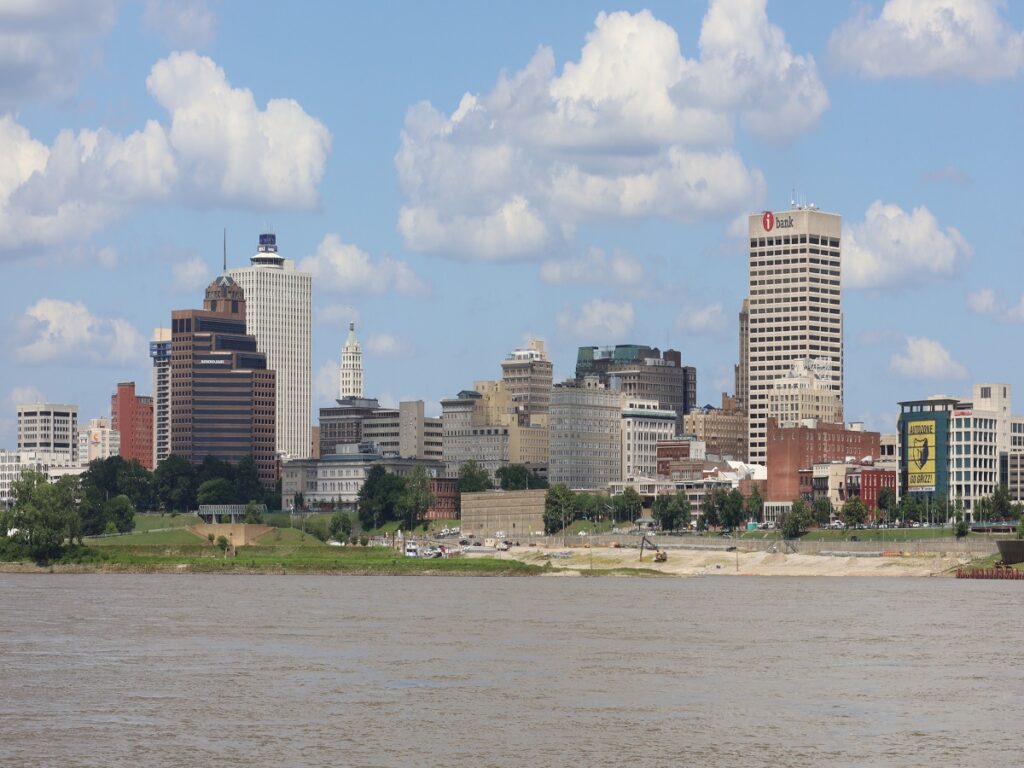In recent years, the affordability of housing in the United States has become a pressing concern. While wages have seen modest increases, rents in many cities have surged at a much faster pace, leading to a growing disparity. This trend has left many renters struggling to keep up with rising costs. In this article, we explore ten U.S. cities where rent is rising faster than wages, examining the underlying factors contributing to this imbalance and its implications for residents.
1. Cleveland, OH

Cleveland experienced the highest year-over-year rent increase among the 50 largest metro areas in the U.S., with the median asking rent rising 10.6% to $1,360 in November 2024. This surge outpaced wage growth, exacerbating affordability challenges for residents. The city’s rental market has been influenced by factors such as limited housing supply and increased demand, particularly in desirable neighborhoods. These dynamics have contributed to the widening gap between rent and wage growth, placing additional financial strain on renters.
2. Pittsburgh, PA

Pittsburgh has seen a nearly 48% increase in median rent since 2019, the highest surge among major U.S. cities. This sharp rise contrasts with the national trend of declining rents, which fell 3.7% from their 2022 peak. The city’s rental spike began during the pandemic when remote workers, particularly from costly metros like New York, relocated to more affordable cities. The increased demand, coupled with limited new construction, has driven prices higher due to constrained supply.
3. San Francisco, CA

San Francisco’s rental market is rebounding sharply after several years of decline during the pandemic. As of February 2025, the median rent for a one-bedroom apartment reached $2,810, a 5% increase from the previous year but still 14% below the July 2019 peak of $3,270. The city’s rents are now rising at one of the fastest rates in the U.S., driven by shrinking vacancy rates and increased demand, particularly from tech workers. This turnaround highlights the challenges renters face in keeping up with rising housing costs in competitive markets.
4. Chicago, IL

Chicago led the country for the biggest rent increase in August 2024, with a hike of 10.7% year-over-year, sending the median asking rent to $2,275. This significant rise in rental prices has outpaced wage growth, placing additional financial pressure on renters. Factors contributing to this trend include increased demand in urban areas, limited housing supply, and broader economic conditions affecting affordability. Many residents are now considering relocating to nearby suburbs or seeking roommates to share the rising costs of urban living.
5. San Jose, CA

San Jose, situated in the heart of Silicon Valley, experienced a 10.1% increase in rent prices, ranking it among the top cities for rapid rent growth. The city’s booming tech industry has attracted a high-income workforce, increasing demand for limited housing, which drives prices higher. Despite strong job opportunities, wage growth has not kept pace with escalating rents, forcing many long-term residents and young professionals to struggle with affordability. This widening gap emphasizes the challenge of balancing economic growth with housing accessibility in one of the nation’s most competitive rental markets.
6. Columbus, OH

Columbus witnessed a striking 23% increase in rent prices, making it one of the fastest-growing rental markets in the Midwest. Population growth, fueled by the city’s expanding tech, healthcare, and education sectors, has intensified demand for rental housing, leaving supply strained. While the city has seen modest wage increases, these have lagged far behind rising rents, making affordability a growing concern for working families and students alike. Local policymakers are exploring ways to expand housing stock, but the immediate effect has been heightened financial pressure on renters and increased competition for available units.
7. Des Moines, IA

Des Moines has emerged as a surprising hotspot for rent growth, experiencing a 21% increase over recent years. The city’s economy, anchored by insurance, finance, and healthcare, has drawn more professionals seeking housing, while the available rental supply has not kept pace. Rising rents have significantly outstripped wage growth, meaning many residents are allocating an increasingly large portion of their income toward housing costs. The affordability gap is forcing households to make tough choices, such as relocating to distant suburbs or reducing discretionary spending, highlighting the challenges even mid-sized cities face in balancing growth with livability.
8. St. Louis, MO

St. Louis recorded a 17.6% rise in rental prices, reflecting a notable increase in housing costs over the past few years. Although wages have risen moderately, the pace cannot match the speed of rent growth, leaving many households financially strained. Economic development, migration patterns, and historic housing supply constraints have combined to drive up rental rates across urban neighborhoods. Rising rents have pushed some families to seek alternatives outside the city, while others are forced to compromise on the quality or size of living spaces, creating social and economic pressures that policymakers must address.
9. Memphis, TN

Memphis experienced a 17.2% increase in rent prices, indicating a sharp rise in housing costs that has outpaced wage growth. The city’s growing economy, fueled by logistics, manufacturing, and healthcare, has attracted new residents, increasing rental demand. With limited new housing developments, competition for available units has intensified, pushing rents higher. Many renters face challenges in covering basic living expenses, leading to difficult decisions about housing, transportation, and savings. This trend underscores the need for proactive policies to expand affordable housing and protect lower-income families in rapidly growing urban areas.
10. Shreveport, LA

Shreveport saw a 16.1% increase in rent prices, marking it as one of the fastest-growing rental markets in the region. Economic shifts, population growth, and limited housing supply have contributed to rising rental costs, leaving many residents struggling to balance their budgets. Despite incremental wage growth, rents continue to outpace earnings, creating affordability challenges for working-class households. The situation has forced families to prioritize housing over other necessities or consider relocation to more affordable areas, highlighting the urgent need for policies that expand rental options and support long-term community stability.
Comments